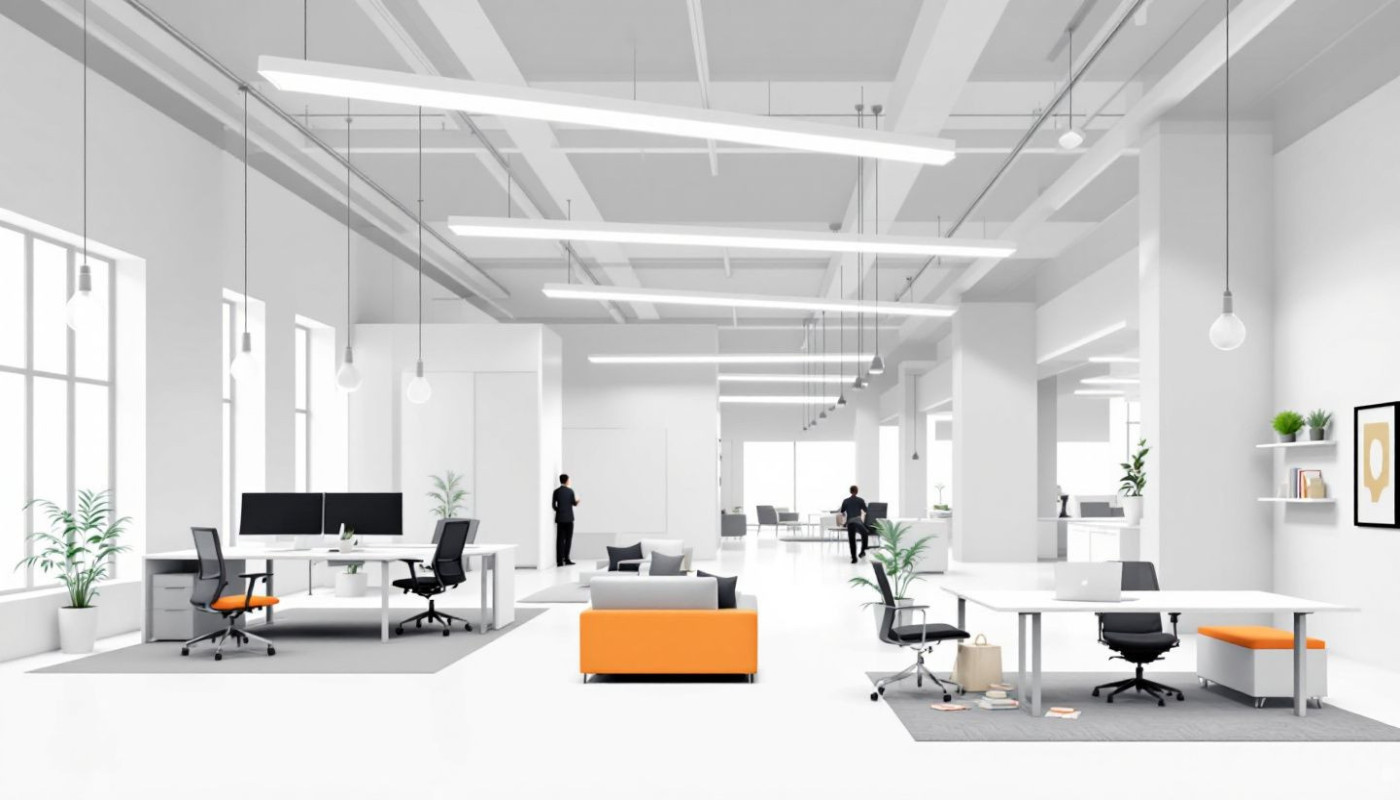Table of contents
In today's rapidly evolving business landscape, one concept stands out as a game-changer: flexible workspaces. This approach is reshaping how organizations operate, driving efficiency, and fostering innovation across industries. Dive into the insights below to uncover how adaptable office environments are perfectly attuned to meet the demands of contemporary businesses.
Flexible workspace fundamentals
A flexible workspace is defined by its adaptability, allowing businesses to tailor their office environments to evolving operational requirements. Unlike traditional static offices, flexible workspace solutions include a variety of setups such as coworking areas, hot desking options, and shared offices. These environments promote agile working practices and provide companies with the ability to scale space usage up or down as needed, reducing long-term commitments and overhead costs. Central to this concept is activity-based working, where individuals choose the best setting for the task at hand—whether it’s collaborative work in open areas, focused tasks in quiet zones, or informal meetings in lounge spaces.
Shared office spaces are popular among startups, freelancers, and even established corporations seeking efficiency and networking opportunities. Coworking environments foster community and creativity, often providing amenities such as high-speed internet, meeting rooms, and event spaces. Hot desking, another pillar of the adaptable office, offers unassigned seating, empowering users to select different workstations each day based on their specific needs. These types of flexible workspace arrangements have proven especially attractive in dynamic business sectors, where agility and resource optimization are highly prized.
As modern companies seek environments that support productivity, innovation, and employee satisfaction, the demand for flexible workspace solutions continues to rise. Global heads of corporate real estate increasingly recommend these adaptable offices for their ability to accommodate hybrid work models and fluctuating team sizes. For those exploring quality options, the Best coworking spaces in Leeds serve as a strong example of how flexible workspace providers can meet diverse business needs while fostering a vibrant professional community.
Adapting to workforce trends
In response to the rapid transformation of workforce trends, particularly the expansion of remote work, gig economy participation, and heightened expectations for work-life balance, flexible workspaces have emerged as pivotal in meeting contemporary business needs. These environments are designed to support an agile workforce by providing adaptable layouts, advanced connectivity, and on-demand services that empower employees to choose when, where, and how they work. This flexibility attracts a diverse talent pool, from freelancers and contractors to full-time staff, all seeking autonomy and a dynamic atmosphere conducive to productivity.
Flexible workspaces play a vital role in boosting employee satisfaction, which is increasingly linked to talent retention and organizational success. By offering amenities such as ergonomic furniture, wellness facilities, collaborative zones, and quiet areas, these spaces address the varied requirements of today’s professionals. The ability to tailor workspace usage according to fluctuating project demands or individual preferences allows companies to accommodate different work styles, further enhancing employee well-being and engagement.
The proliferation of gig economy roles has also influenced the development of flexible workspace models. As companies integrate more project-based and freelance professionals into their teams, the need for scalable, short-term workspace solutions has grown. Flexible workspaces provide cost-effective alternatives to traditional leases, enabling businesses to rapidly adjust their footprint in line with hiring or project cycles. This adaptability ensures organizations remain competitive while fostering a culture that values work-life balance and employee autonomy.
Adopting flexible workspaces demonstrates a commitment to progressive workforce trends and is often championed by the chief human resources officer, who recognizes the connection between workspace design and employee satisfaction. By supporting remote work, facilitating collaboration across distributed teams, and promoting a healthy work-life balance, flexible workspaces directly contribute to higher retention rates and an overall more agile workforce, ultimately positioning companies to thrive in an ever-evolving business landscape.
Cost efficiency and scalability
Flexible workspaces present a strategic solution for companies seeking cost efficiency and workspace flexibility. By leveraging dynamic leasing arrangements, organizations can access professional environments without committing to long-term office lease contracts, dramatically reducing overheads such as utilities, maintenance, and administrative staffing. This model allows businesses to pay only for the space and services they use, leading to immediate financial relief and freeing capital for core operations or growth initiatives. Short-term leasing options also empower enterprises to adjust quickly to market changes, scaling up or down their workspace footprint in direct response to workforce fluctuations or shifting project demands. Such adaptability not only supports rapid business scalability but also matches the unpredictable nature of today’s commercial landscape, making flexible workspaces a prudent choice for companies prioritizing fiscal responsibility and operational agility.
Technology enabling collaboration
Workplace technology has become a driving force behind the evolution of the smart office, with connectivity at its core. Flexible workspaces now leverage integrated communications platforms that unify messaging, video calls, document sharing, and real-time project management, allowing teams to collaborate efficiently whether on-site or remote. Digital tools, such as cloud-based productivity suites and secure file-sharing solutions, enable employees to access and contribute to shared resources from any location. This connectivity not only supports dynamic team collaboration but also boosts productivity and creativity by removing barriers associated with traditional office setups. Modern businesses utilize these advancements to remain agile and competitive, seamlessly coordinating workflows and ensuring that team members can interact without disruption, regardless of time zone or physical presence. In the smart office landscape, technology is not just an accessory but a foundational element that keeps enterprises adaptable and aligned with the demands of today’s fast-paced marketplace.
Supporting sustainability goals
Flexible workspaces play a pivotal role in supporting sustainability by integrating energy efficiency, shared resources, and waste reduction into their core design. By utilizing features such as LED lighting, advanced HVAC systems, and smart energy management, these environments minimize overall power consumption, which directly lowers the environmental footprint of daily operations. The adoption of a green office ethos is evident in practices like sourcing eco-friendly materials and providing recycling stations throughout the workspace. Shared resources, such as communal office equipment and conference areas, further reduce the need for redundant purchases and excess material usage, streamlining operations while decreasing waste output. Eco-friendly workspace solutions, including digital documentation and cloud storage, help eliminate paper use and promote a more sustainable working model for all occupants.
Modern organizations are increasingly valuing these environmentally conscious initiatives as they align with corporate sustainability targets and societal expectations. A chief sustainability officer, recognized as the authority in this domain, often guides the adoption of green office strategies to ensure regulatory compliance and strengthen brand reputation. As demand grows for workplaces that prioritize sustainability and energy efficiency, flexible workspaces are uniquely suited to deliver on these priorities by offering scalable, resource-sharing models that support both operational efficiency and environmental stewardship.
On the same subject













